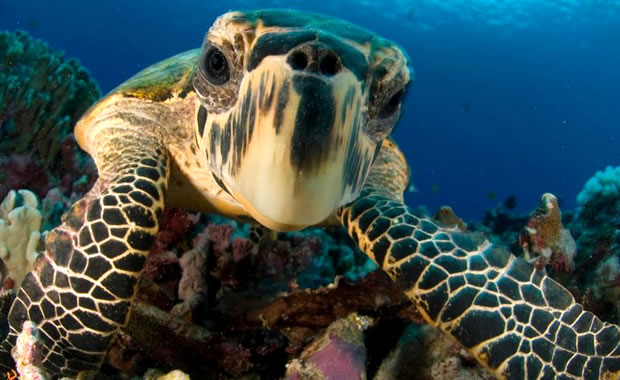Creature Profile
The blackbuck is a mammal belonging to the family Bovidae. It weighs approximately 70 to 95 lbs and stands about 21 to 32 inches tall. It is able to generate heat internally, hence it is endothermic. The blackbuck's body is slim in nature. It is one among the few antelope species whose male and female color differs. Males have a dark brown coat on the dorsal side, both sides and on the outer parts of the limbs while females are usually yellowish on the upper part, the outer side of the limbs and on both sides. The belly and the inner parts of the legs are whitish in both sexes. A circular patch around the eyes which is white in color is exhibited by both sexes. Males tend to darken with age. A blackbuck male has horns which measure about 20 to 15 inches long. These horns have a ringed base and twist spirally for up to four turns. It has a short tail, a sheep-like muzzle and sharp delicate hooves. It is described as being graceful.
The blackbuck is a herbivore and primarily a grazer though it sometimes feeds on tree leaves. Its diet consists of grasses, leaves, flowers, fruits and sometimes acacia trees. It is found in habitats such as open grassland, scrubland, lightly-wooded country, agricultural margins and thorn scrub. It is native to Asia, particularly India but has been introduced in Argentina and the United States. Mating may occur throughout the year, but most breeding is done within the months of March and April, and August to October. The mating strategy used by dominant males is dependent on the number of females present in a mating group. One young is born after about 24 weeks. The young remains hidden for the first week, and the mother returns to suckle it every now and then. The blackbuck is known to live up to 18 years in the wild and can live longer in captivity.
The decline of the blackbuck in the 20th century was due to unsustainable hunting for use in trade. Initial decline was as a result of destruction of habitat for agricultural use and hunting purposes. The population of the blackbuck was approximated to be about 4 million several centuries ago, however, this number has reduced greatly with time. Conservation measures taken to reduce the decline of the blackbuck are protection by law in India and listing in CITES Appendix III.
Wikipedia Article

|
Wikipedia Article Copyright Notice: This article is licensed under the GNU Free Documentation License. It uses material from the Wikipedia article "Blackbuck". |
April 1, 2017
Glenn, C. R. 2006. "Earth's Endangered Creatures - Blackbuck Facts" (Online). Accessed 4/16/2024 at http://earthsendangered.com/profile.asp?sp=9321&ID=11.
Need more Blackbuck facts?




